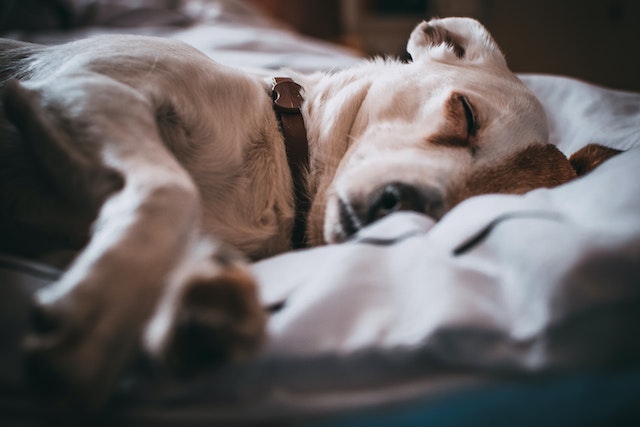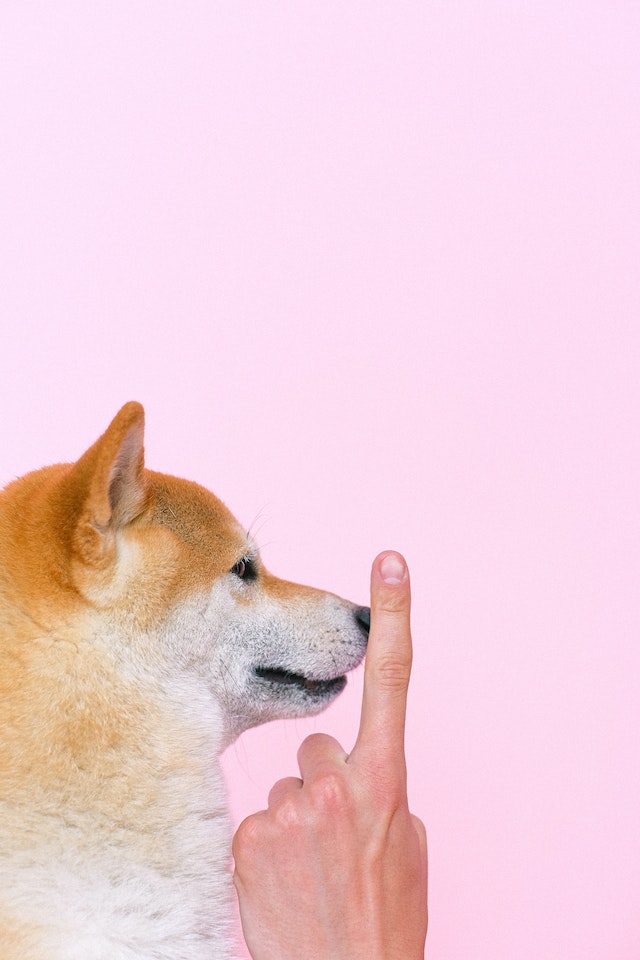We may earn a small commission if you purchase something through the links 🙂
Dogs are curious and often guided by their instincts, leading them to explore and interact with objects and areas that might put their health or safety at risk. This is why dog-proofing your home is essential.
Transforming your home into a haven for your furry buddy is more than just providing shelter —it’s about creating an environment that ensures their safety, comfort, and happiness.
In this article, we’ll explore the essential aspects of making your home safe for your dog. From dog-proofing to selecting appropriate toys and setting up dedicated resting areas, learn how to create a secure and nurturing haven where your dog can enjoy himself and be at peace.
Why should you Dog-proof your home?
- prevents accidents
- protects your belongings
- prevents choking
- reduces your stress and anxiety
- ensures outdoor safety
Dog-proofing your home is a relevant way to ensure the safety and well-being of your dog. Without proper precautions, various accidents can occur that put your dog at risk. Curious by nature, they may unintentionally ingest plants, chemicals, foods, or medications that are toxic to them. Their tendency to swallow small objects can result in choking or gastrointestinal blockages. Chewing on cords can damage electronics and pose electrical hazards, while cluttered spaces can overwhelm them.
To prevent such incidents, dog-proofing your environment is crucial. By taking steps to make your home safer for your dog, you can significantly reduce the risks associated with their curious behaviors.
How to Dog-proof your home?
So, now you might be concerned that your home is not safe enough for your dog. But don’t worry. Now we’ll look into things that you can do to make your home dog-proofed.
Dog-proofing your home involves identifying potential hazards and taking steps to minimize risks for your canine companion. Here’s a comprehensive guide on how to dog-proof your home:
Let’s start by looking around your house
1. Start at Dog's eye level
Get down on your hands and knees to see your home from your dog’s perspective. This may feel silly and unnecessary, but it will help you identify objects, cords, or items that might be within their reach.
2. Remove hazards and implement safety measures
Identify and eliminate potential hazards that could be harmful if ingested.
For example:
- toxic plants,
- electrical cords,
- small objects,
- and chemicals
Take every risk factor out of your dog reach, for example:
- Use lidded trash cans to prevent your dog from digging through and ingesting potentially harmful items.
- Store chemicals, cleaning supplies, medications, and other toxic substances in cabinets that your dog can’t access.
- Keep small items, like buttons, coins, or small toys, off the floor to prevent choking hazards.
- Use cord organizers or cable covers to prevent your dog from chewing on cords.
- Remove or relocate toxic plants that could be harmful if ingested.
- Use baby gates or barriers to prevent access to areas that are off-limits.
- Ensure your yard is securely fenced to prevent escapes.
3. Select appropriate toys

Choosing the right toys for your dog ensures that he gets mental stimulation, which then prevents boredom.
When selecting toys for your dog it’s good to keep these factors in mind:
1. Size Matters: It’s best and safest for your dog, that you choose toys that are appropriate for your dog’s size to avoid choking hazards. So avoid buying too small toys for your dog to prevent choking.
2. Durability: Opt for toys that are durable and resistant to heavy chewing. This reduces the risk of small parts breaking off and your dog choking on them.
3. Variety: Provide a variety of toys that cater to different play styles, such as fetch, tug-of-war, and interactive puzzles.
5. Furniture and Belongings: Provide appropriate chew toys to redirect your dog’s chewing behavior away from furniture and belongings.
4. Create a resting area

Creating a designated resting area offers your dog a cozy and secure space to unwind. Consider these tips when setting up resting spaces:
1. Comfortable Bedding: Choose comfortable and supportive bedding that suits your dog’s size and sleeping preferences.
2. Quiet Location: Place the resting area in a quiet spot where your dog can retreat and relax undisturbed.
3. Positive Association: Make the area appealing by placing favorite toys, blankets, and treats nearby to create a positive association with their resting space.
5. Training
One of the most helpful ways to dog-proof your home and prevent accidents from happening is to train your dog.
By training your dog to understand basic commands like “leave it” and “stay” you are able to inhibit various accidents from happening.
Also by using positive reinforcement to encourage good behavior, you are able to discourage undesirable actions, which then leads your dog to know what is acceptable behavior and what is not
Regularly assess your dog-proofing measures and make adjustments as your dog’s behavior and needs change.

Products for dog-proofing your home:
Here’s a list of commonly used products for dog-proofing your home:
- Baby Gates: block off areas that are off-limits to your dog, such as staircases or certain rooms.
- Crate or Dog Playpen: provides a safe space for your dog when you’re not able to supervise them closely.
- Cord Covers and Organizers: prevent your dog from chewing on electrical cords and help keep cords neatly organized.
- Outlet Covers: prevent your dog from sticking objects or their tongue into them.
- Childproof Cabinet Locks: secure cabinets that contain items like cleaning supplies, chemicals, or potentially harmful items.
- Trash Can with Secure Lid: Choose a trash can with a lid that your dog can’t easily open to prevent digging through the garbage. Also, some trash cans are designed to be dog-proof, preventing them from accessing the contents.
- Corner and Edge Guards: protects your dog from sharp edges on furniture.
- Dog Toys and Puzzle Feeders: Provide a variety of toys and interactive feeders to keep your dog mentally stimulated and prevent boredom.
- Stainless Steel Bowls: Choose durable and non-toxic bowls for food and water to prevent chewing and potential contamination.
- Storage Containers: Store dog food and treats in sealed containers to prevent your dog from getting into them.
- Dog-Safe Cleaning Products: Choose cleaning products that are safe for pets to avoid exposing your dog to harmful chemicals.
- Bedding and Comfort Items: Provide comfortable bedding and blankets for your dog’s designated space.
- ID Tag and Microchip: Ensure your dog has proper identification in case they manage to escape.
- Window Screens: If you like to keep windows open, use screens to prevent your dog from falling or escaping.
- Pet-Friendly Furniture Covers: Protect your furniture from scratches and fur with specially designed covers.
- Secure Leashes and Collars: Use high-quality leashes and collars to ensure your dog stays safe during walks and outings.
These products can vary based on your dog’s size, breed, and specific needs. It’s important to research and choose products that align with your dog’s safety and comfort. Regularly inspect and update these items as needed to maintain a safe and dog-friendly environment.
In conclusion
Creating a dog-friendly home environment involves a combination of careful planning, safety measures, and thoughtful design. By dog-proofing your space, selecting appropriate toys, designating resting areas, and implementing safety measures, you’re not only enhancing your dog’s safety but also promoting their overall well-being and comfort.
Remember that each dog is unique, so tailor your home environment to their specific needs and preferences. With a little effort and consideration, you can turn your home into a secure and nurturing haven where your beloved furry friend can thrive and enjoy a harmonious life with you.
Also, it’s good to realize that no environment can be completely risk-free, but taking these steps can significantly reduce the chances of accidents or incidents that could harm your dog. Tailor your dog-proofing efforts to your specific dog’s behavior, breed, and needs to create a safe and comfortable home for them.